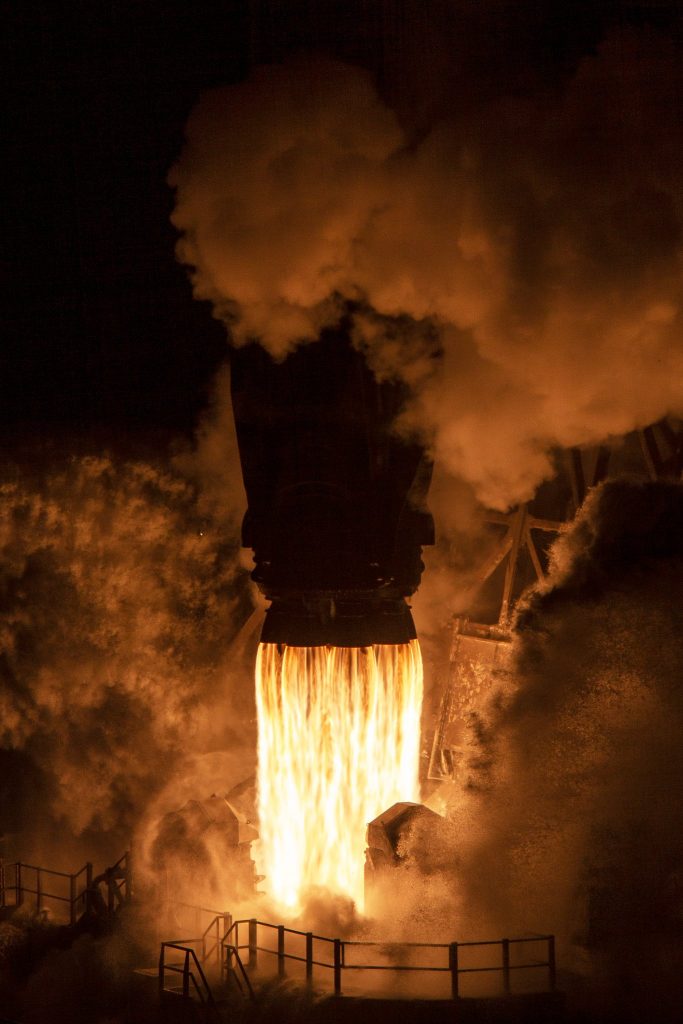
SpaceX doubled down in 2022, now aiming higher
SpaceX CEO Elon Musk had set an ambitious target of one launch per week in 2022. But the folks at SpaceX outdid themselves in 2022, first achieving that goal and then surpassing it. And now they’re aiming to outdo themselves yet again in 2023.
2022 was a launch record-setter for SpaceX – and the aerospace industry at large – as SpaceX rockets successfully achieved orbit 61 times. The final SpaceX launch came on December 30, when a Falcon 9 boosted the EROS C-3 satellite for ImageSat International.
Falcon 9 launched the @ImageSatIntl EROS C-3 mission to orbit overnight, completing SpaceX’s 61st and final launch of 2022 — nearly double our record of 31 launches set last year pic.twitter.com/KTQydZvoYC
— SpaceX (@SpaceX) December 30, 2022
In exceeding CEO Elon Musk’s ambitious target of one launch a week, SpaceX doubled its own previous record of 31 launches set in 2021. And it set the record for the world’s most reliable rocket. With very little fanfare, the company’s PR people noted the astounding accomplishment via a side note on Twitter:
On average, SpaceX launched every 6 days from one of our three sites with 92% of missions completed with flight-proven first stage rocket boosters, and Falcon 9 now holds the world record for most launches of a single vehicle type in a single year
— SpaceX (@SpaceX) December 30, 2022
Another record year ahead?
For 2023, Musk wants to double the company’s launch rate – nearly – again:
Yeah, aiming for up to 100 flights next year
— Elon Musk (@elonmusk) August 31, 2022
That’s about two launches every week!
Of course, two a week is an average, which means that sometimes the launch cadence will exceed it. Just next week, SpaceX plans to launch a pair of Falcons only two hours apart.
First, a group of Starlink satellites will lift off on a Falcon 9 at 6:54 p.m. PT on Sunday, January 8 (2:54 UTC on January 9) from Vandenberg Space Force Base in California. Almost exactly two hours later – at 11:55 p.m. ET (4:55 UTC) – a second Falcon 9 lifting off from Cape Canaveral in Florida will carry the OneWeb 16 mission to deliver 48 communications satellites. Each of OneWeb’s satellites weighs 150 kg (330 lbs). It will be the second time SpaceX has carried its competitor’s satellites into space.
SpaceX has five other launches planned for January, three of which will carry batches of Starlink satellites.
Thousands more SpaceX satellites in 2023
According to EverydayAstronaut.com, this latest batch of 52 Starlink satellites brings the total launched so far to 3,718. About 300 of those have been deorbited, leaving around 3,400 still flying. That means SpaceX will have to launch about 1,000 Starlink satellites this year to meet its current goal. As EverydayAstronaut.com reported:
Starlink Generation 1 consists of five orbital shells and has a total of 4,408 satellite slots. These satellites will entirely be launched on Falcon 9, and it is expected for these launches to finish in 2023.
Generation 2 will dwarf Gen 1, with nearly 30,000 satellites needed to complete it. That number is 20 times more than the total number of satellites launched from the time Sputnik was orbited in 1957 until the Starlink program began in 2019.
Crowded skies force satellites to dodge
SpaceX has already made its first launch this year, hosting a ride-share that put 114 tiny CubeSats into space early last week. It described the mission on its website:
On Tuesday, January 3 at 9:56 a.m. ET, Falcon 9 launched Transporter-6, SpaceX’s sixth dedicated smallsat rideshare mission, from Space Launch Complex 40 at Cape Canaveral Space Force Station in Florida. This was the fifteenth launch and landing of this Falcon 9 stage booster, which previously supported launch of GPS III-3, Turksat 5A, Transporter-2, Intelsat G-33/G-34 and 10 Starlink missions.
According to Professor Hugh Lewis of the Astronautics Research Group at the University of Southampton in England, the growing number of satellites on orbit forced SpaceX craft to make more than 26,000 adjustments to avoid hitting other objects during the last two years.
SpaceX has reported a total of 26,037 collision avoidance manoeuvres being performed in the period 1 December 2020 to 30 November 2022 (i.e. 2 years). The trend is a 3rd order polynomial (R^2 = 0.998) [2/n]
— Hugh Lewis (@ProfHughLewis) January 3, 2023
If his numbers are right, then SpaceX’s Starlink satellites will be forced to adjust course about one million times in total by the end of 2027.
The reporting by SpaceX suggests that Starlink satellites (in total) are currently performing about 75 collision avoidance manoeuvres each day. With the simple extrapolation, the number could be ~1,000 per day by the end of 2027 [4/n] pic.twitter.com/55pFbcQn0w
— Hugh Lewis (@ProfHughLewis) January 3, 2023
Bottom line: SpaceX had set a record launch pace in 2022 and plans to double it in 2023. Meanwhile, traffic is getting heavy on orbit.











